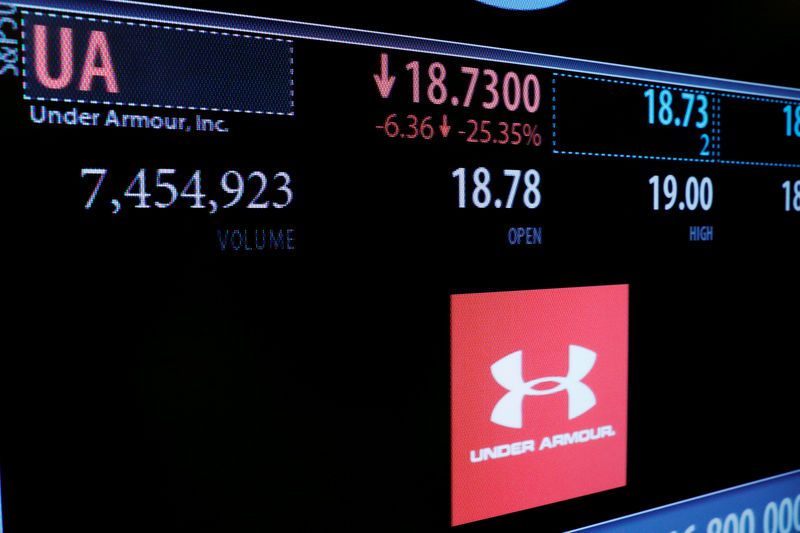Futures edge up; Trump takes tariff case to Supreme Court - what’s moving markets
Investing.com -- Under Armour, Inc. reported first-quarter fiscal 2026 results that fell short of analyst expectations, with the athletic apparel maker’s shares plunging 13.6% following weak guidance that significantly missed Wall Street forecasts.
The company posted adjusted earnings per share of $0.02, slightly below the analyst estimate of $0.03, while revenue declined 4% YoY to $1.1 billion, missing the consensus estimate of $1.13 billion. The disappointing performance was compounded by the company’s second-quarter outlook, which projects earnings of $0.01-$0.02 per share, dramatically below analyst expectations of $0.26.
"We are pleased our quarterly results met or exceeded our expectations as we drive a bold transformation – sharpening Under Armour (NYSE:UA) into a brand where sports credibility, innovation and style meet operational discipline," said Under Armour President and CEO Kevin Plank.
The company’s North American revenue decreased 5% to $670 million, while international revenue declined 1% to $467 million. Footwear was particularly weak, with revenue dropping 14% to $266 million, while apparel revenue decreased 1% to $747 million. Accessories provided a bright spot, growing 8% to $100 million.
Under Armour’s gross margin improved by 70 basis points to 48.2%, primarily due to favorable foreign exchange, pricing, and product mix. However, the company expects gross margin to decline 340 to 360 basis points in the second quarter, largely due to supply chain headwinds and anticipated impacts from tariffs.
The company is currently implementing a restructuring plan announced in May 2024, aimed at improving financial and operational efficiencies. The plan is expected to cost between $140 million and $160 million, with $71 million in restructuring charges already recorded by the end of the first quarter.
For the second quarter, Under Armour expects revenue to decline 6-7%, with a low-double-digit percentage decrease in North America and a low-teens percent decline in the Asia-Pacific region, partially offset by high-single-digit growth in EMEA.
